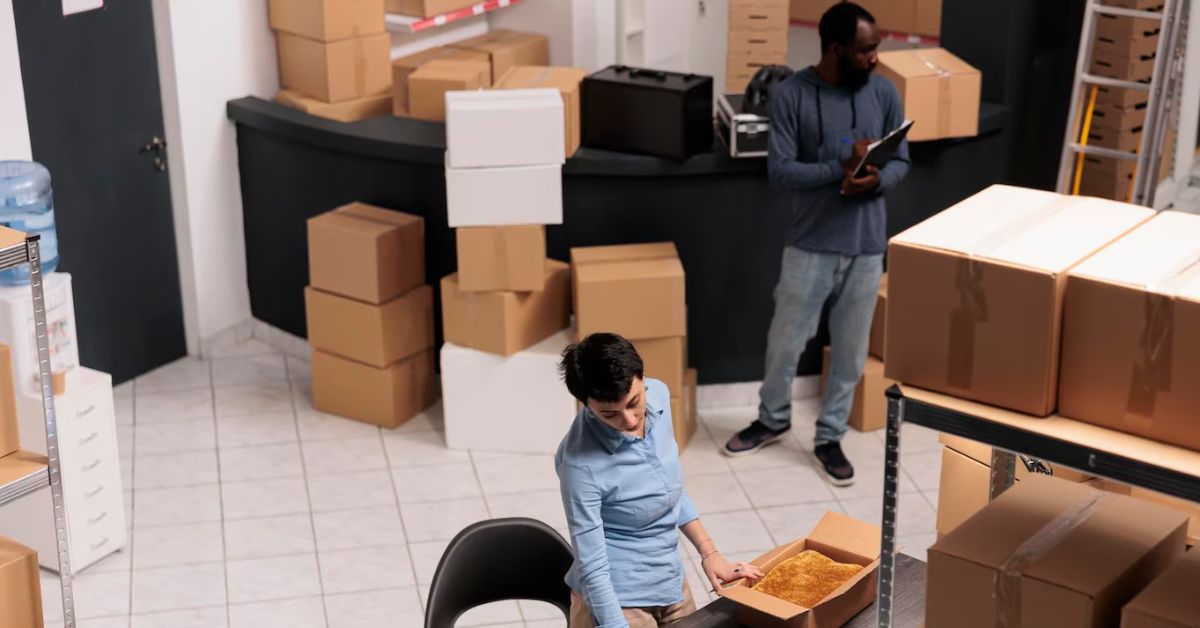Moving isn’t always a direct path from one home to another. Sometimes the timeline doesn’t align. Other times, the space isn’t quite ready. Or maybe you’re just not sure where everything belongs in your new place. That’s where temporary storage comes in.
Using short-term storage during a move is more common than many people realize—and when done right, it can simplify the process, protect your belongings, and buy you the time you need to settle in with less stress.
Here’s how to know when storage makes sense, what types of solutions to consider, and how to coordinate everything seamlessly with your move.
When Storage Becomes a Smart Strategy
Storage isn’t just for long-term downsizing or decluttering. Even short-term moves can benefit from temporary solutions. These are some of the most common scenarios where storage can save the day:
1. Your Move-Out and Move-In Dates Don’t Match
Maybe you’ve sold your home but can’t move into the new one for another two weeks. Or your lease ends before the next begins. Instead of scrambling for space—or paying for double rent—storage can hold your items until your new place is ready.
2. You’re Downsizing and Unsure What Will Fit
Moving into a smaller space often requires time to make decisions. Storage gives you breathing room to sort, donate, or sell furniture and décor without pressure.
3. You’re Renovating the New Space
If your new place needs flooring, painting, or kitchen updates before move-in, storage keeps your furniture clean, safe, and out of the way until the dust settles.
4. You’re Relocating in Phases
In larger moves—especially those involving multiple family members or cities—it’s common to split the move into stages. Storage lets you move what’s needed first, and bring in the rest later.
Types of Storage Options to Consider
Not all storage solutions are created equal. Depending on your timeline, budget, and volume of belongings, different approaches may work better for you.
1. Self-Storage Units
The classic choice: you rent a space, get a key or code, and load/unload on your own schedule. Units vary in size and are often climate-controlled. Ideal for:
- People comfortable handling their own logistics
- Items you may want access to during storage
- Budget-conscious short- or mid-term needs
2. Full-Service Storage Through a Moving Company
Some movers offer temporary storage as part of their service. They pack and transport your belongings into a secure facility, then deliver them to your new address when you’re ready.
This is especially helpful when you want minimal handling—and maximum convenience.
Working with a moving company like Clockwork Moving Company that offers integrated storage can make coordination much easier. Instead of juggling two vendors, your timeline and inventory stay under one roof.
3. Portable Containers (Pods)
You’ve probably seen them in driveways or parking lots—containers dropped off at your home and picked up once filled. These are a flexible option when you want to pack on your own schedule but don’t want to drive items to a facility.
How to Prepare for Temporary Storage
Putting items into storage takes more than just loading them into a unit. A little planning goes a long way in keeping things organized and protected.
1. Inventory Everything
Keep a detailed list of what’s going into storage, especially if it includes valuables, seasonal items, or furniture with detachable parts.
Bonus tip: label every box with its contents and the room it came from.
2. Use Uniform, Stackable Containers
When possible, use the same size and style of box. It makes loading, stacking, and unloading far easier. Plastic bins are ideal for long-term durability, but quality cardboard boxes work for most short-term needs.
3. Wrap Furniture and Fragile Items
Use moving blankets, bubble wrap, or furniture pads to prevent scratches and protect from dust. Avoid plastic wrap for long-term storage—it can trap moisture and lead to mildew.
4. Disassemble When Possible
Remove legs from tables, headboards from beds, and bulbs from lamps. Smaller, flatter items are easier to store and less likely to be damaged.
Coordinating Storage with Your Move
If you’re using both a moving company and a storage facility, timing is everything.
Things to clarify in advance:
- Will the movers deliver directly to storage?
- Are you responsible for access codes or on-site presence?
- Will items be stored temporarily on the truck or unloaded into a unit?
- If using local movers, how far is the storage location from your destination?
If your storage is just for a few days—say, during a weekend gap between leases—some movers will keep your items on the truck and deliver them once your new place is ready. It saves loading and unloading twice, which can also reduce costs.
Common Storage Mistakes to Avoid
Even with great movers and good organization, there are a few pitfalls to watch out for.
- Overpacking boxes: Heavy boxes are more likely to collapse or injure you during handling
- Skipping climate control: For electronics, instruments, or wood furniture, climate control helps prevent warping or mold
- Not labeling items clearly: You’ll regret it later when searching for one cable or kitchen tool
- Forgetting to update your insurance: Confirm if your renter’s or homeowner’s policy covers stored belongings—or if you need temporary coverage
Final Thought: Storage Isn’t a Complication—It’s a Solution
Many people think of storage as a last resort or backup plan. But when used strategically, it can be the difference between a chaotic move and a smooth, flexible experience.
Whether you’re bridging a gap between leases, decluttering ahead of a downsize, or giving yourself time to renovate, short-term storage gives you space—literally and figuratively—to get things right.
And if you’re coordinating everything at once, working with a local moving company like Clockwork Moving Company that understands the logistics of both moving and storage can make the entire process easier from start to finish.
Because sometimes, the best way to move forward… is to store things smartly in the meantime.











